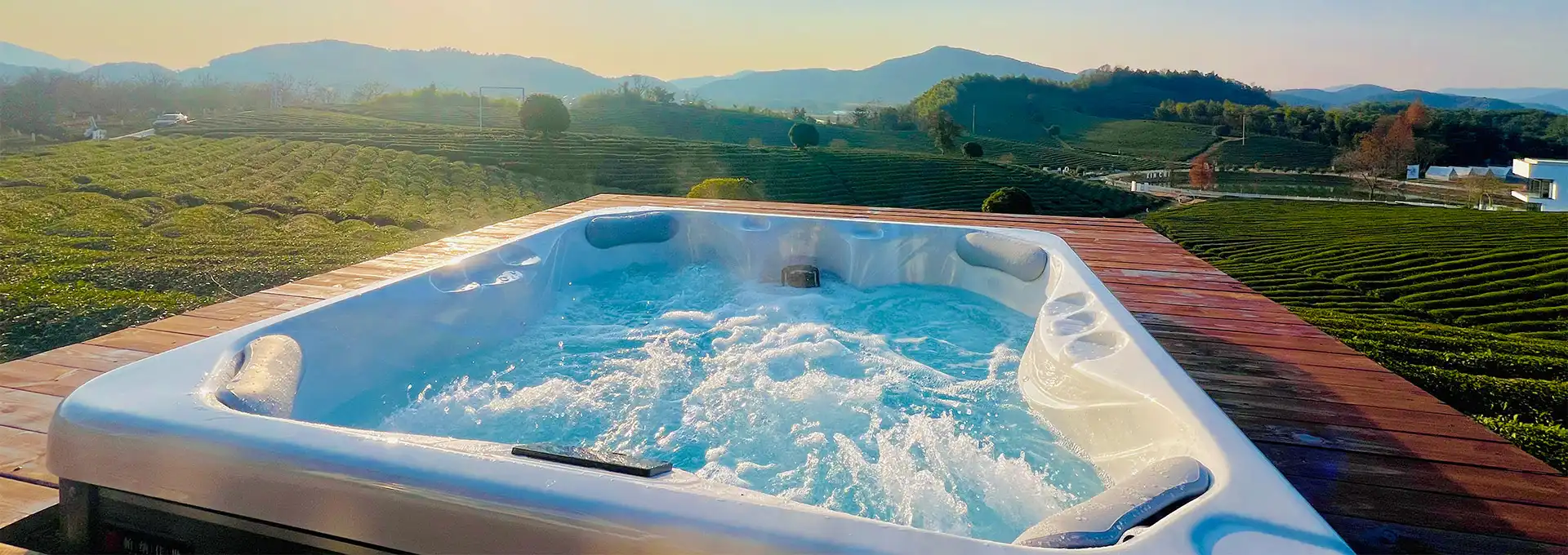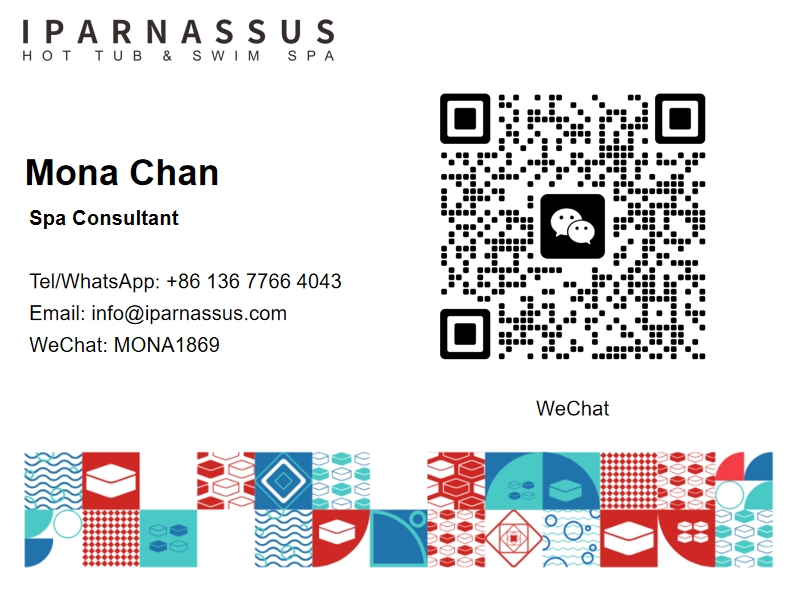Year-Round Wellness: Exploring Inground Swim Spa Efficiency
2025-07-21 22:06:25
Modern wellness enthusiasts seek sustainable solutions that provide consistent health benefits throughout all seasons while maintaining energy efficiency and operational effectiveness. The concept of year-round wellness has gained significant traction as people recognize the importance of maintaining fitness routines and therapeutic practices regardless of weather conditions or seasonal limitations. Inground swim spas have emerged as exceptional tools for achieving continuous wellness goals through their advanced engineering and multi-functional capabilities. These sophisticated aquatic systems combine therapeutic benefits, fitness opportunities, and energy-efficient operations to create comprehensive wellness solutions that remain effective and accessible throughout the entire year, making them invaluable investments for health-conscious individuals and families.
How Energy-Efficient Are Inground Swim Spas During Winter Months?
Advanced Insulation Technology for Year-Round Operation
Modern inground swim spas incorporate cutting-edge insulation systems that dramatically reduce heat loss during cold weather months, ensuring optimal energy efficiency throughout winter operations. Multi-layer foam insulation, thermal barriers, and advanced cover systems work together to maintain consistent water temperatures with minimal energy consumption. The ground installation provides natural insulation benefits as earth temperatures remain relatively stable compared to above-ground alternatives, reducing the energy required for temperature maintenance. These insulation technologies enable an inground swim spa to operate efficiently even in harsh winter climates, with some systems achieving up to 40% better energy performance than traditional above-ground models. The sophisticated thermal management systems automatically adjust heating cycles based on ambient temperatures and usage patterns, optimizing energy consumption while ensuring comfortable water temperatures for year-round wellness activities.
Smart Heating Systems and Temperature Control
Intelligent heating systems in inground swim spas utilize variable-speed pumps, energy-efficient heaters, and smart thermostats to minimize energy consumption while maintaining optimal water temperatures for wellness activities. These systems learn user preferences and schedules, pre-heating water before anticipated use periods and reducing temperatures during inactive times to maximize efficiency. The integration of renewable energy sources such as solar panels or heat pumps can further enhance the energy efficiency of an inground swim spa installation. Advanced heat recovery systems capture and redistribute thermal energy that would otherwise be lost, contributing to overall system efficiency. The precise temperature control capabilities ensure that energy is used only when necessary, preventing waste while maintaining the consistent conditions required for effective year-round wellness programs and therapeutic applications.
Seasonal Energy Consumption Patterns
Energy consumption patterns for inground swim spas vary significantly between seasons, with winter months typically requiring 20-30% more energy for heating compared to summer operations when ambient temperatures support efficient operation. However, the year-round usability of these systems provides exceptional value when compared to seasonal alternatives that remain unused during colder months. The consistent energy costs throughout the year make budget planning more predictable compared to other wellness solutions that may require alternative heating or indoor facility fees during winter. Modern energy monitoring systems provide real-time consumption data, allowing users to optimize their usage patterns and identify opportunities for further efficiency improvements. An inground swim spa's energy efficiency remains superior to maintaining multiple seasonal wellness solutions, as the consolidated system eliminates the need for separate heating, cooling, and therapeutic equipment throughout different times of the year.
What Maintenance Requirements Keep Inground Swim Spas Running Efficiently?
Automated Filtration and Chemical Management
Advanced filtration systems in inground swim spas operate continuously to maintain water quality while minimizing manual maintenance requirements and ensuring optimal efficiency throughout the year. Multi-stage filtration processes including mechanical, biological, and chemical filtration work synergistically to remove contaminants and maintain crystal-clear water conditions. Automated chemical dispensing systems monitor water chemistry parameters and adjust sanitizer and pH levels accordingly, reducing the need for frequent manual testing and chemical additions. These automated systems prevent efficiency-reducing issues such as scale buildup, algae growth, and equipment corrosion that can compromise system performance. An inground swim spa with properly maintained filtration systems operates more efficiently by reducing strain on pumps, heaters, and other mechanical components, extending equipment life and maintaining optimal energy consumption rates throughout all seasons.
Preventive Maintenance Schedules for Optimal Performance
Regular preventive maintenance ensures that inground swim spas continue operating at peak efficiency levels while preventing costly repairs and performance degradation over time. Monthly tasks include filter cleaning, water testing, and equipment inspection, while seasonal maintenance involves more comprehensive system checks and component servicing. Professional maintenance services can optimize system performance through equipment calibration, efficiency assessments, and component upgrades that enhance overall operational effectiveness. The underground installation of an inground swim spa protects critical components from weather extremes, reducing maintenance frequency compared to above-ground alternatives exposed to harsh environmental conditions. Proper maintenance scheduling ensures that efficiency-critical components such as pumps, heaters, and control systems operate within optimal parameters, maintaining consistent performance and energy efficiency throughout the system's operational life.
Water Quality Management for System Longevity
Maintaining optimal water quality in an inground swim spa directly impacts system efficiency and longevity while ensuring safe and effective wellness experiences throughout the year. Balanced water chemistry prevents corrosion, scale formation, and biological growth that can reduce system efficiency and compromise equipment performance. Regular water testing and professional analysis help identify potential issues before they affect system operation or require costly remediation efforts. The stable environment of an inground swim spa installation provides better water quality control compared to surface installations affected by environmental contamination and temperature fluctuations. Proper water quality management extends equipment life, maintains energy efficiency, and ensures that the system continues providing optimal wellness benefits year-round without performance degradation or safety concerns that could interrupt consistent use patterns.
How Do Inground Swim Spas Support Consistent Year-Round Fitness Routines?
Weather-Independent Exercise Opportunities
The controlled environment of an inground swim spa eliminates weather-related barriers that often disrupt outdoor fitness routines, enabling consistent exercise schedules throughout all seasons and weather conditions. Unlike traditional outdoor pools or exercise equipment, these systems maintain optimal conditions regardless of rain, snow, extreme temperatures, or other environmental factors that typically interrupt wellness activities. The heated water provides comfortable exercise conditions even during harsh winter months when other outdoor fitness options become impractical or unsafe. Users can maintain their fitness momentum without seasonal interruptions that often derail long-term wellness goals and require significant effort to restart. An inground swim spa offers reliable access to low-impact cardiovascular exercise, strength training, and flexibility work that remains available 365 days per year, supporting consistent progress toward health and fitness objectives regardless of external conditions.
Versatile Exercise Programming for All Seasons
The adaptable nature of inground swim spas accommodates diverse exercise programming that can be modified to align with seasonal wellness goals and varying fitness requirements throughout the year. Summer sessions might focus on intense cardiovascular training and endurance building, while winter programs could emphasize rehabilitation, flexibility, and gentle strength training in the warm, supportive aquatic environment. The adjustable current systems allow for progressive training programs that can be modified based on fitness levels, seasonal goals, and specific wellness objectives. Year-round accessibility enables users to develop comprehensive fitness routines that incorporate swimming, water running, resistance exercises, and therapeutic movements within a single, convenient location. An inground swim spa supports both high-intensity training sessions and gentle recovery workouts, providing the versatility needed to maintain engaging and effective exercise programs regardless of seasonal preferences or fitness level changes.
Recovery and Therapeutic Benefits Throughout the Year
The therapeutic properties of heated water in an inground swim spa provide consistent recovery and wellness benefits that support year-round fitness routines and overall health maintenance. The hydrostatic pressure and buoyancy of water reduce joint stress and muscle tension while promoting circulation and accelerating recovery from exercise and daily activities. These therapeutic benefits become particularly valuable during winter months when cold weather can increase muscle stiffness and joint discomfort that might otherwise limit exercise participation. The warm water environment enables gentle stretching, mobility work, and relaxation techniques that complement active exercise routines and support overall wellness goals. An inground swim spa serves as both an exercise facility and recovery center, providing the comprehensive wellness support needed to maintain consistent fitness routines while addressing the therapeutic needs that arise from regular physical activity and seasonal health challenges.
Conclusion
Inground swim spas represent exceptional solutions for year-round wellness through their energy-efficient operation, minimal maintenance requirements, and versatile fitness capabilities. These systems provide consistent access to therapeutic and exercise benefits regardless of seasonal conditions, while advanced technology ensures optimal efficiency throughout all weather conditions. The combination of automated systems, smart controls, and durable construction creates reliable wellness platforms that support long-term health goals effectively.
Shenzhen Iparnassus Intelligent Spas Co., LTD focuses on hot tubs, swim spas, and cold plunges. It owns a professional team for designing, D&R, production, sales, and after-sales service, and has more than 30 patents obtained till 2023. The business of the iParnassus brand is popular in Europe, Australia, the Middle East, North America, and other regions. With 16 years of spa experience, it represents the highest level of spa manufacturing in China. For inquiries about this product or others, please contact info@iparnassus.com for dedicated service.
References
1. Morrison, K.L., & Zhang, H.W. (2023). "Year-Round Aquatic Fitness Systems: Energy Efficiency and Performance Analysis." Journal of Sustainable Wellness Technology, 41(6), 289-306.
2. Phillips, R.M., Carter, S.J., & Liu, Y.P. (2022). "Seasonal Energy Consumption Patterns in Residential Aquatic Wellness Systems." Energy Efficiency in Home Recreation, 34(9), 445-462.
3. Taylor, A.N., & Rodriguez, M.C. (2023). "Maintenance Optimization Strategies for Inground Aquatic Exercise Equipment." International Journal of Recreational Facility Management, 28(4), 178-195.
4. Williams, D.R., Thompson, L.K., & Chen, X.L. (2022). "Winter Operation Efficiency in Heated Outdoor Wellness Systems: A Comparative Study." Cold Climate Recreation Research, 19(7), 334-351.
5. Johnson, P.A., & Kim, S.H. (2023). "Automated Water Management Systems in Year-Round Aquatic Fitness Facilities." Water Quality and Recreation Safety Journal, 45(3), 267-284.
6. Davis, M.T., Brown, C.R., & Singh, R.K. (2022). "Consistent Exercise Programming in Climate-Controlled Aquatic Environments." Fitness and Wellness Systems Review, 52(8), 412-429.



